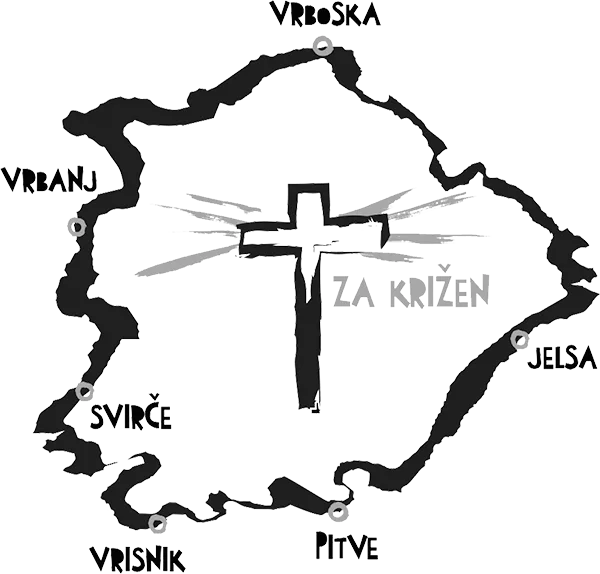Music and the people’s processions
The processions are visually impressive, and the haunting singing which accompanies them completes a profound spiritual experience for participants and observers who join in having prepared themselves in a pious frame of mind.
Each settlement has its own versions of the chants which are sung during their ‘Za Križen’ processions. Prayers are usually sung by the people following the cross along the route, while the leaders around each Cross-Bearer sing supplications in ancient harmonies. In the all-night Procession, for each stop there are different chants when approaching and leaving the churches. Inside the churches the central focus is the singing of the ‘Gospin Plač’ (‘Our Lady’s Lament’). This is divided into three parts, the first and last sung by two lead tenors, with the response in between by three or four. The tradition of ‘Our Lady’s Lament’, in the original Latin the ‘Stabat Mater’, is said to date back to the end of the 13th and beginning of the 14th centuries, based on a poetic text by Jacopone da Todi (1233-1306). In the Hvar version only a few words at a time are sung in each part of the lament: they are drawn out into a prolonged stream, with a pause for breath in between the lines. The singers coordinate to create an almost palpable vibration during the chant, which gives the effect of a female wailing over the top of their deep male voices. The correct breathing technique is essential to producing the phenomenon.
Traditionally, sons of the singers learn the technique from puberty, as soon as their voices break, so that later on they can be chosen for the honour of singing this essential part of the procession rituals.
All the most important chants during the Holy Week events are sung by males producing sonorous and resonant harmonies.
is the singing of ‘Puče moj’ (‘Oh my People’). The ‘Muke Gospodina’ (‘Passion of Christ’) is sung several times during the week: in the churches members of the choir take on the parts of the various people involved in the unfolding of the events.
